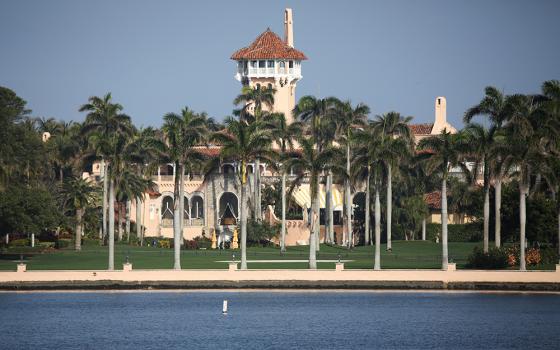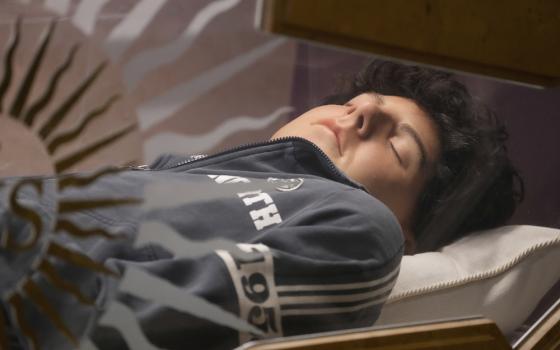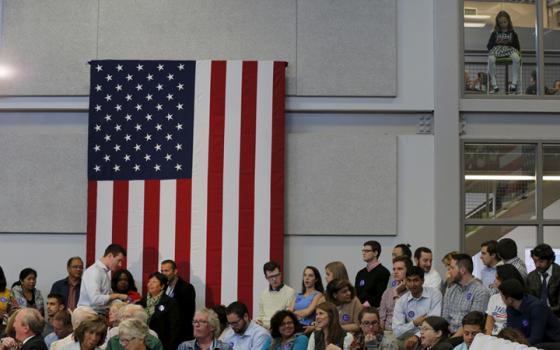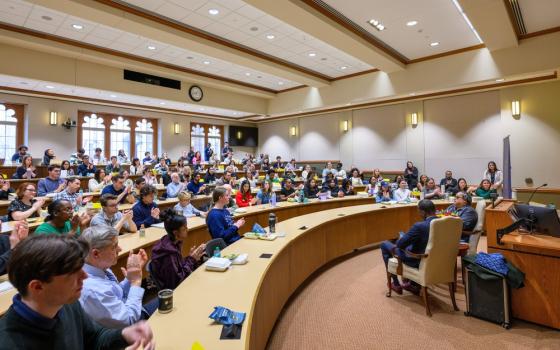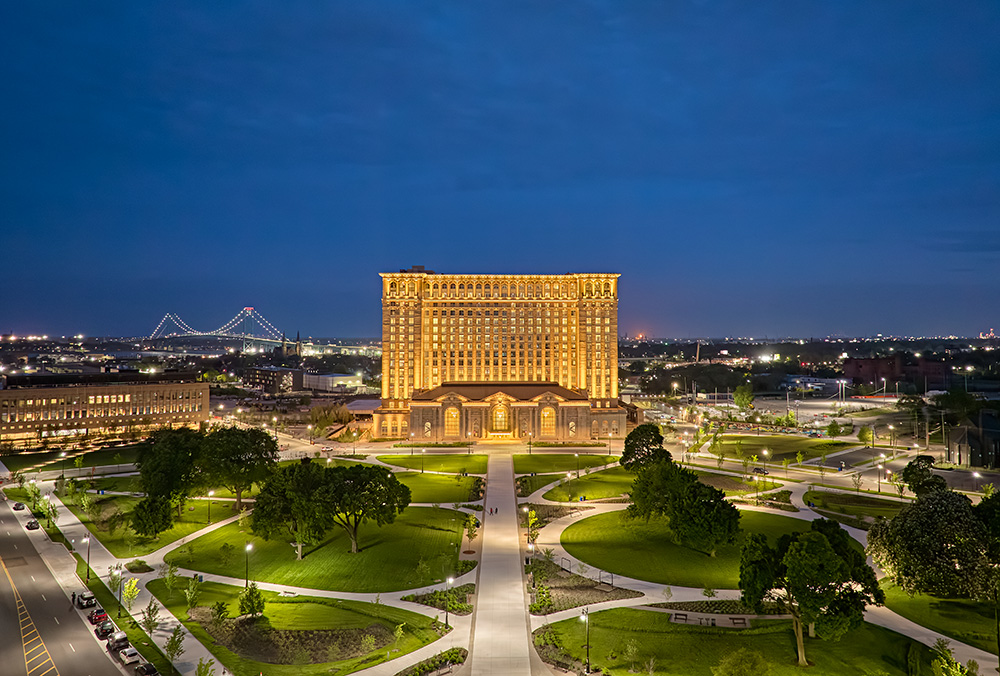
Michigan Central Station opened in 1913 and was the arrival point for thousands of immigrants who came to work in the automotive plants. The last train left the station in January 1988 and the station sat empty and decaying for decades before Ford Motor Company purchased it in 2018. The renovated station opened to the public in June. (Ford Media Center)
The motto for the city of Detroit is "Speramus Meliora; Resurget Cineribus," which in Latin means "We hope for better things; it will rise from the ashes." Sulpician Fr. Gabriel Richard, often known as the second founder of Detroit, wrote these words as he beheld the ruins of the city after the Great Fire of 1805.
No words more perfectly embody the recent reopening and transformation of Michigan Central Station, located in the Corktown neighborhood.
The station was built in 1912 and opened on December 26, 1913, after the previous station had burned down, and was designed by the architects who also built Grand Central Station in New York City. It was a wonder for its time: a three-story depot with 10 gates for trains, an 18-story tower, more than 500 offices, a restaurant, barber, florist, bathing facilities and much more. The station connected Detroit to cities around the country.
With the birth of American suburbs and car ownership, rail travel began to decline in the 1950s. The last train left the station in January 1988. It sat empty for decades, becoming a painful symbol of the city as the building decayed and was vandalized.
For decades after its closing, the dilapidated building began to represent what people said or thought about Detroit, Michigan: This city is dead. There is no life or rebirth here. It is a wasteland. People left the city to the suburbs after the race riots in the 1960s. All we have to show are high crime rates and poverty.
Advertisement
Over the years, there were multiple attempts at redevelopment plans for how this historic building might be saved and utilized, and yet they all fell through. In 2018, Ford Motor Company purchased the structure with plans to completely transform the building for the good of the neighborhood and the city.
Ford Executive Chair Bill Ford said it best: "This Station was our Ellis Island — a place where dreamers in search of new jobs and new opportunities first set foot in Detroit. But once the last train pulled out, it became a place where hope left."
The historicity of this space means much to its locals for what it represented in its time. Michigan Central Station was the arrival point for thousands of immigrants who came to work in the automotive plants, searching for a new life and better opportunities.
It was where Black people came fleeing the Jim Crow South. It was where immigrants came for jobs, filled with grit in their hearts. This local neighborhood became home for many Hispanic and Irish people, communities who have strong roots in the local neighborhoods. The hopes, dreams, prayers and stories of so many people passed through this station.
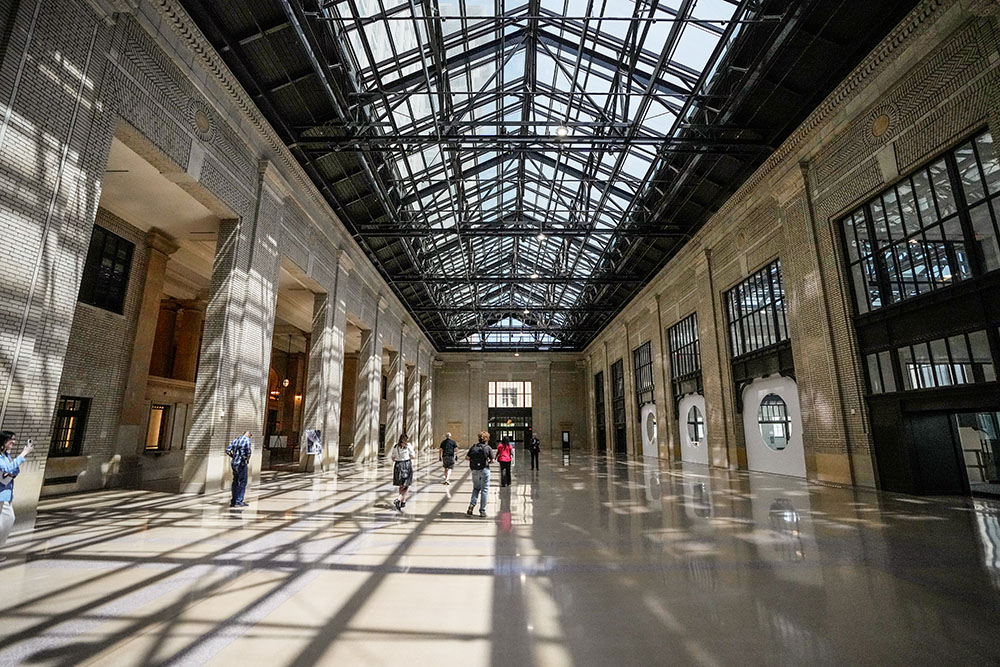
The interior of the restored Michigan Central Station in Detroit is seen on May 13. (AP/Carlos Osorio)
For the last nine months, I have called the Corktown neighborhood my home. A few weeks before moving for a new job, I had the opportunity to pay a few visits to the newly renovated building.
The new building was breathtaking — in some ways it felt like walking into a beautiful old cathedral in Europe. It left me speechless. You could almost feel the sacredness of the space, as if the energy of all the dreams and stories of those who passed through the station was somehow collected and still felt to this very day. It was a holy moment.
On my second visit, I wanted to savor the beauty of the space. I sat in the Grand Hall for almost 45 minutes. I beheld all the beauty around me. I watched people of all ages walk around and take in the space, reading the placards telling the story of the train station and some even shedding tears.
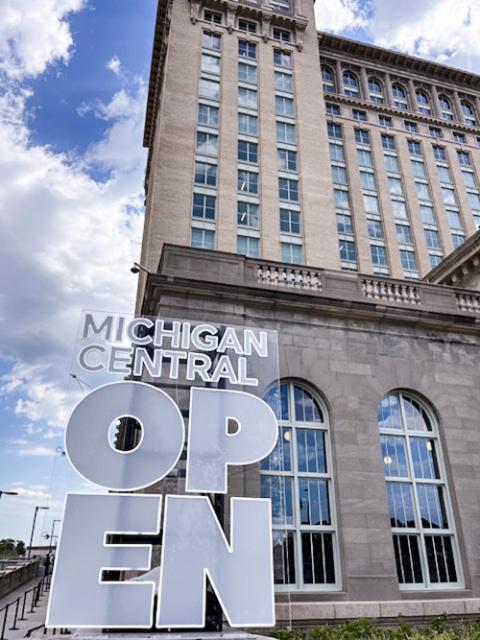
The June 6-16 Michigan Central OPEN event offered the public the first look at the renovation of Detroit's Michigan Central Station. (Patty Breen)
I heard that still, small voice in my heart: "Savor this, Patty. Savor this."
Savor this beauty, these stories, the peaceful music, the other people around me who were equally as moved as they walked in.
Sometimes we can forget the spiritual realities swimming all around us. Buildings and spaces can be opportunities and invitations to encounter God. The experience of soaking up a beautiful building like Michigan Central Station can be just as moving as a summer sunset, meaningful worship service or taking a walk in the stillness of the woods.
God meets us in all types of places. The Divine presence is not bound to one particular method of finding you and me, of connecting with us.
When Michigan Central Station first opened, it was a central hub for railway transportation. Now, in this new era, it embodies those words of the city's motto, a true "rising from the ashes" in more ways than one.
Today, Michigan Central is becoming an innovative space, a beacon of new development and opportunity to take this local community and the city of Detroit further into the future. It is a call toward hope, recognizing that we are not defined by struggles or challenges, but can rise from the ashes with hope as fuel for better things.

